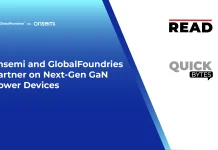Mercury Systems, a technology company that delivers mission-critical processing to the edge, announced it has been selected by the U.S. Department of Defense (DoD) for funding through its Industrial Base Analysis and Sustainment (IBAS) Program to develop a next-generation RF signal conditioning multi-chip package (MCP). The IBAS Program aims to improve the readiness and competitiveness of the defense industrial base through investments in high-priority domestic technologies and supply chains.
Under a two-year, $8.5 million contract with commercial partner Systems Innovation Engineering, Mercury will develop and demonstrate a new solution designed to enhance the performance and cost of X-band Active Electronically Steered Array (AESA) radars used in air, sea, and ground-based applications. This ultra-compact signal conditioning package will leverage Mercury expertise and innovation in microwave and mixed signal technologies to reduce the size, weight, and power requirements of these integrated assemblies by more than 80% compared to existing hardware. By leveraging state-of-the-art processes, this capability will be more producible, affordability will be improved, and high-volume missions will be enabled.
“This award demonstrates DoD’s confidence in Mercury’s ability to rapidly develop innovative RF solutions that utilize a broad set of our in-house capabilities, spanning engineering design, advanced packaging, and high-volume manufacturing production,” said Ken Hermanny, Mercury’s Senior Vice President of Signal Technologies. “We’re building a first-of-its-kind signal conditioning module optimized for performance and scalable to meet future demands for a wide range of radar programs and customers.”
Also Read: Boeing Names Stephen Parker as CEO of Defense, Space & Security
“This effort exemplifies the power of our processing platform to bring together silicon-to-system innovation from across Mercury,” said Tony Trinh, Senior Director of Advanced Packaging within Mercury’s recently formed Advanced Concepts Group. “By drawing on capabilities from across our enterprise to build an integrated yet configurable, high-performance solution, we are accelerating technology insertion and supporting our customer’s mission with trusted, leading-edge technology.”
“This capability will play a pivotal role in advancing RF sensor performance and readiness to counter the evolving threat landscape we will face in the years ahead,” said John Schofield, who supports the IBAS Program as a Chief Scientist assigned to the U.S. Naval Surface Warfare Center’s Crane Division. “It supports the warfighter by enabling faster, more reliable threat detection, delivered through trusted, U.S.-sourced innovation.”
SOURCE: GlobeNewswire




